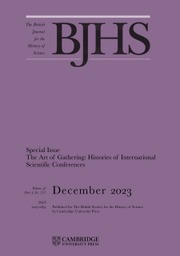This excellent study shows the extensive and deep medical knowledge of six women, each of whom was a ‘medical savant’ (p. 131) who authored imaginative texts in eighteenth-century Britain. Facilitated by cultures of medicine and professional writing that had not yet formalized sufficiently to exclude women’s voices, women’s imaginative writing on health and medicine flourished during the eighteenth century. Illness and the body proved generative topics in their literary output, whether in poetry, prose or autobiography. Characters’ suffering prompted experimentation in communicating voice and interiority; particular medical conditions prompted new poetic forms. At the same time, these women’s writings show distinctive forms of medical knowledge, particularly but not only relating to women’s bodies. The book is an important contribution both to literature and to the history of medicine and science, foregrounding women’s creativity and expertise even as patriarchal stereotypes of women’s inferiority persisted. Meek underscores how medical ideas have been profoundly gendered in the past, demonstrating the insufficiency of a narrative of modernizing ‘Enlightenment’ progress in knowledge. Strikingly, though, Meek’s close analysis conveys an alternative kind of dynamism, one undertaken by thinking and feeling women across the life course as they suffered, cared and treated, creating innovative imaginative responses to illness, and to medical knowledge about it.
A comprehensive introduction lays out the literary and medical contexts, inviting readers to ‘regard illness as at once a concrete pathology and a label attached to a range of overlapping and competing narratives’ (p. 19). The six chapters that follow each explore one woman’s writing within a richly drawn context of contemporary medicine literature. Chapter 1 on Jane Barker’s writing on hysterical affliction makes a compelling case for Barker as a pioneer. Meek argues that her novel Love Intrigues (1713) rewrote conventional medical views on women’s physical and mental illness through the protagonist Galesia, whose condition is not the result of her inherent female weakness but of very real social conditions coupled with the duplicitousness of her male lover. The women examined in the remaining five chapters are perhaps more familiar to readers interested in the topic: the poet Anne Finch on ‘spleen’ and melancholy; smallpox as discussed in the letters of Lady Mary Wortley Montagu; Hester Lynch Thrale Piozzi’s reflections in her journals on the trials of motherhood; consumption in Mary Wollstonecraft’s semi-autobiographical novel Mary, A Fiction (1788); and the experiences of breast cancer, mastectomy and recovery as conveyed by Frances Burney in a letter to her sister. Each chapter stands alone as a sophisticated and nuanced analysis.
Recurring themes develop, of course. Their writing gave these women a space in which to define themselves outside the parameters set by some professional ‘expert’ medical knowledge, in which women might be deemed weak, unstable or diseased. In this, as well as in more straightforward ways, their writing was political. Much of their thinking reflected the longevity of traditional humoral models and defied Cartesian dualism: many women’s illnesses, they insisted, were both physical and psychological, straddling body and mind. One prominent theme across the chapters is a fascination of these writers with the complexity of mental and emotional afflictions. Several of these writers themselves used narrative to impose control over their own physical and mental crises (Barker and Burney, for example). They gave alternative explanations and treatments for medical conditions, including writing as relief (as did Finch for the spleen) and sometimes denounced doctors’ practice outright (perhaps most notably, Montagu and Burney). One of the obvious tensions for these women was between an occasional defiant resistance to manly medical expertise and a grudging, apprehensive deference to medical authority. Women were themselves part of established medical practice, not only in providing medical care themselves but also through collaboration with doctors in the processes of their own diagnosis, treatment and recovery.
In wanting to insist on women’s place in medical writing and simultaneously situate them outside dominant medical paradigms and negotiating ‘an imposing, patriarchal medical profession’ (p. 214), Meek never quite settles on a definite claim about the position of women in the generation of medical knowledge. And this is perfectly appropriate. The writings of these six authors show difference and diversity in ideas but not a shared collective female-centred vision. Some of the distinctive formulations on medicine and health in these women’s writings – in contrast to the wider paradigms generated from the medical writing of doctors and practitioners – arise not from their gender but because they spoke from the perspective of the patient and sufferer. Even when these women practised medicine – Barker commercially, Montagu as medical innovator and all of these women in caring roles for friends and family – their writings were rooted in their own embodied experience of illness. Barker’s work was shaped by her blindness and Montagu addressed her toothache and gum disease at length, for example. The most startling contrast between ‘women’s’ and ‘medical’ approaches comes when Burney’s account of her own mastectomy in a letter to her sister is juxtaposed with a report of her surgery by a medical student. Meek notes an interesting detail of Montagu’s letter: she accepts the report of the nurse that her face was ‘utterly colourless’ following the operation, while resisting the accounts of the medical men (p. 205). It is one hint of trust between women, perhaps. Otherwise, Burney’s astonishing account of her dreadful ordeal – her objectification by the surgeon – entangles woman and patient. As Meek points out in the conclusion, these six women need to be placed alongside other male writers from the period who wove their own bodily frailties throughout their literary works (Alexander Pope, Samuel Richardson, Jonathan Swift and Lawrence Sterne, for example). Ultimately, gender shaped but did not determine their attention to illness or the sense they made from it. Indeed, this book left me with a profound sense of the power of eighteenth-century women’s autonomy and individuality of body and thought.


